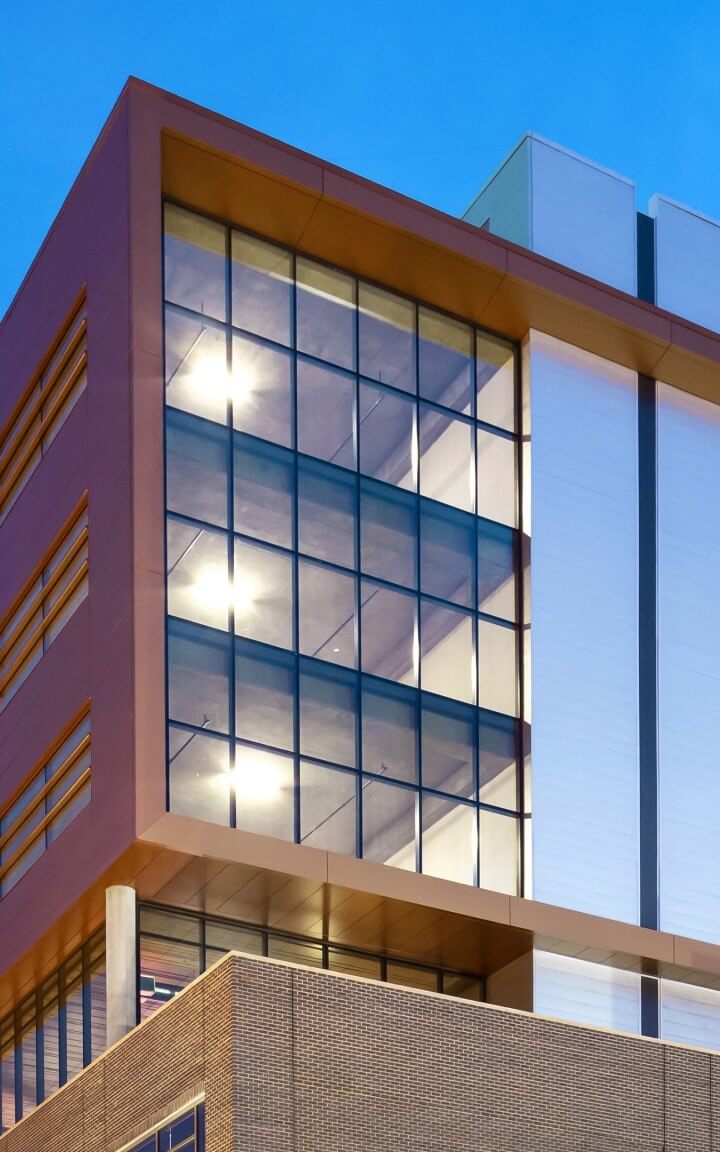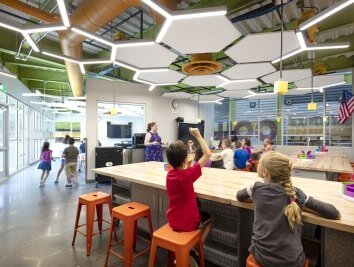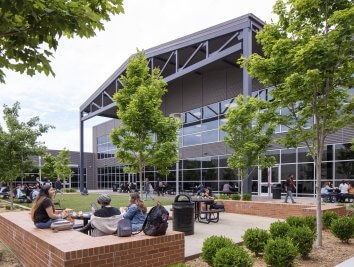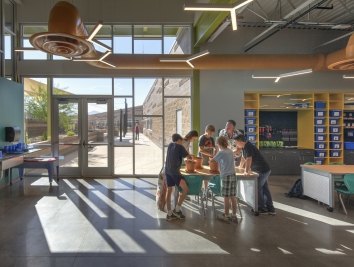Give Me a Break: A New Approach to Teacher-Spaces

Teachers spend a majority of their workday facilitating discussions and leading lessons. Compared to employees in traditional offices who have more individual work time and opportunities to mingle and interact with others in common areas, teachers spend most of their day “always on” with students—lacking dedicated spaces to work individually, take a personal call, or collaborate with mentors and peers.
Although most schools have breakrooms, they are not always designed to support the unique needs of teachers, encourage casual connections between colleagues, or offer private, respite spaces needed to recalibrate. According to a recent survey of 1,000 K-12 teachers across the United States conducted by Corgan, only 57 percent of teachers were satisfied with the design of teacher breakrooms at their school. That leaves considerable room for improvement.
Better teacher breakrooms, however, don’t rely on high-end, glossy finishes. At Corgan, we’re exploring how to evolve the typology of the teacher “breakroom” to create a space that intentionally serves the various needs of teachers—shifting the focus from amenities to practical interventions for added functionality.
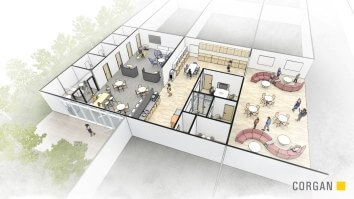
Location
Strategically locating dedicated teacher spaces is key to successful adoption. For teachers, maintaining a connection to the students throughout the day is an integral part of their job. Situating teacher spaces at intersection points where students naturally gather or, where possible, adjacent to student breakout areas allows teachers to access the resources they need without having to sacrifice the connection they need to their students. Because of their proximity to each other, teachers can engage with students, facilitate time with students who may need extra attention, and can remain visible for safety while also feeling empowered to balance their responsibilities with time for themselves and their professional needs.
Variety
While an important part of the mix, connectivity to students alone does not provide for all the several needs of teachers. Often lacking personal time or opportunities for collaboration in the natural rhythm of their day, dedicated spaces have the potential to provide teachers with the respite and social platforms they struggle to find elsewhere. From phone booths and wellness rooms to a place to grade tests and share a lunch with colleagues, teachers, like most other professionals, require a variety of settings and environments.
Adapting the best practices from other workplaces, a central “teachers union” functions as a modern hybrid of spaces for teachers—serving as more than a “breakroom” and extending the teacher’s workplace beyond the walls of a classroom. This shared space brings educators together in an anchoring hub of activity and attract teachers to the space with in demand amenities and support features—small meeting spaces, individual booths for “heads down” work, wellness rooms for nursing teachers, and high-top, plug and play tables for a quick bite or emails. The heart of activity for teachers, the space brings faculty together and encourages both casual and intentional interaction, collaboration, social bonds, and mentorship.
Zoning
In a zoned-approach, the variety of settings naturally progresses from public, visible, and high-energy spaces to spaces that are increasingly private for individual tasks or respite. As teachers enter, a large dynamic space with flexible furniture, work surfaces, and writable walls welcomes and puts staff interaction on display while maintaining a line of sight to students and corridor activity. Moving inward, the “teachers union” offers dedicated rooms for small group meetings and a kitchen for mindful meals with colleagues. Finally, the interior of the space hosts wellness rooms, phone booths, and comfortable, residentially inspired furniture signaling quiet focus spaces for administrative work.
Organizing the teacher’s union in a zoned fashion provides added control over the environment—allowing users to select the appropriate setting for their task or need, providing better management of the circulation and use of the space, and maintaining usability and function in each of the zones.
As schools compete for teaching talent, workplace trends and responses provide insight on how to attract and retain top educators. However, the high-end finishes of corporate break rooms, ping-pong tables, and over-the-top gyms are often not feasible or appropriate for the school setting. A practical, functional, and comprehensively designed teacher’s union, instead, communicates a school and district values the unique needs of their staff—delivering a healthier, more collaborative, and more supportive environment curated with the resources teachers need to succeed.
